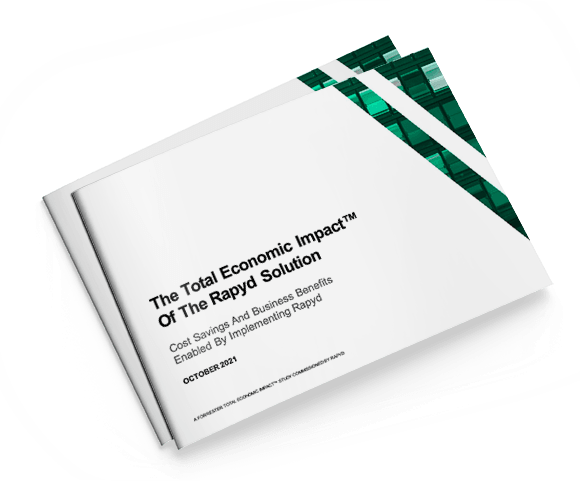Now, any company can be a financial services company.
Fintech as a Service (FaaS) allows for any company to use fintech APIs to embed financial capabilities into their existing applications, products and services.
FaaS solutions include white-label ewallet platforms, card issuing, payment acceptance, payouts and remittances, identity verification, fraud prevention, virtual accounts and merchant services, as well as solutions for provisioning, managing and reporting.
With Fintech as a Service, the work of building the infrastructure, integrating multiple, disparate financial systems, licensing and compliance is handled by a third party, so businesses can quickly integrate and offer many financial services to customers that were once only available through traditional banking and financial companies.
The Three Essential Pillars of Fintech as a Service
Businesses need to understand the three main benefits of FaaS. Each benefit can help address the most pressing challenges facing global businesses dealing with financial, payments, and money movement services.
Pillar 1: A Unified Tech Stack
To make FaaS fast and easy to implement, you need a single, integrated technology stack designed from the ground up to give product managers and developers maximum flexibility to craft high-quality, localized user experiences for local and cross-border commerce.
Fintech as a Service consolidates all financial management, payment, and money movement services that modern businesses need to build effective applications through a single, global, scalable API.
This can involve a number of moving parts, such as:
- Receiving payment or collections in globally with locally preferred methods, including bank transfers, locally issued cards, ewallets, in stores, and via cash
- Compliance – Identity Verification (KYC) and Anti-Money Laundering (AML) screening
- Foreign Exchange Management – allowing users to collect funds in local currencies and settle in the currency of their choice.
- Disbursing or paying out funds worldwide using payout methods such as, bank transfers, ewallet transfers, instant card-to-card payments or cardlessly in cash
- eWallets, many with features such as multi-currency accounts and loyalty programs
- Card Issuing – both virtual and plastic cards for discrete use cases
Given a single centralized tech stack, solutions architects are free to adopt a user-centric approach to their design efforts. This lets your company place the focus on experience above all else, while simultaneously minimizing the need to invest resources in backend infrastructure. The next step is using FaaS to break down the barriers that stop global expansion.
Pillar 2: Simplified Global Payments
Global credit card ownership is less than 20%, a rate that varies widely by country and socio-economic background. (World Bank)
More than 2 billion consumers pay in other ways – with cash, using bank transfers, paying with an ewallet, or using a local debit network. The disparate world of local payments presents a great opportunity, but there are major challenges to supporting different payment methods at scale.
That’s why your fintech as a service provider must be able to resolve the complexities of managing local payments. Take Rapyd, where we use the Rapyd Global Payments Network to address all local regulatory and compliance issues, geographic expansion obstacles, global settlement and reconciliation, and vendor relationship management so that you don’t have to.
Compliance requirements and regulations and payment systems vary greatly by region. When integrating financial services into your company’s offerings, you’ll want a fintech as a service provider that manages local licensing and regulations to maintain payment compliance, along with features like built-in AML, CTF, sanctions screening, tokenization and encryption, and KYC and KYB identity verification. FaaS lowers the barriers to global commerce by managing security and compliance. This protects you while letting your customers securely make payments and receive funds using the payment methods they already use and trust.
Reason 3: Leverage a Global Network of Local Payment Methods
With a single toolset at your disposal, the next step is figuring out how you can continue to expand and scale. For this, you’ll need a large and reliable local payments network that supports a variety of payment methods. These local payment methods include cash, bank transfers, e-wallets, and local debit schemes.
Rapyd has built the World’s Largest Local Payment Network to facilitate and streamline global expansion for financial innovators. This interoperable collection of local payment networks reaches billions of people transacting with hundreds of local payment methods. Every node in the Rapyd Global Payments Network is a point-of-access opening up possibilities for financial innovators.
Putting FaaS in Reach of Every Business
Combined, these three key pillars of FaaS — a unified tech stack, simplified global payments, and using a large local payments network — let businesses like yours focus on delivering exceptional customer experience for localized and cross-border commerce.
Today every company must consider how to leverage financial services to better serve and retain customers and drive greater margin. That’s why it is essential to partner with a FaaS provider with a truly global reach and the ability to support numerous local and alternative payment methods. Now is the time to build a globally adaptive enterprise with limitless scale – and do so without having to build the infrastructure first.
Put Fintech as a Service
to Work for You.
Rapyd Fintech as a Service can – from the same cloud-based platform – enable a simple use case, like helping a merchant collect payments using locally-preferred methods in 100+ countries. It also supports more complex scenarios, like a large consumer brand offering their own international ewallet solution, with ID Verification, AML screening, local cash top-up, integrated FX, disbursement, and loyalty programs.
With Rapyd, getting started offering your own financial services is as easy as embedding our pre-built APIs for a seamless customer-facing, user experience.
Photo by Buro Millennial for Pexels.
Subscribe Via Email
Thank You!
You’ve Been Subscribed.





